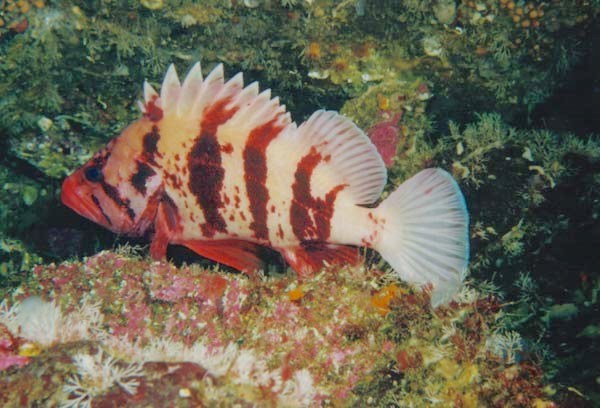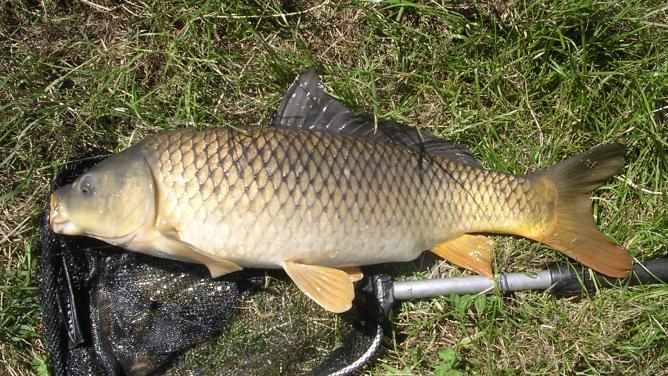Class Teleostomi is divided into two sub-classes.
a) Sub Class-1: Crossoptenygii
- The crossopterygii is characterized by presence of lobe like paired fins covered with scales.
- There are two dorsal fins.
- The internal nares are present.
- This subclass is not represented in Nepal.
- Latimeria
- In this sub-class bony fishes are included which show lobed and massive fins.

b) Sub-class 2: Actinopterigii
- These fishes will live in fresh water or marine water. They not show internal nostrils. This subclass is divided into three super orders.
- The Actinopterygii is characterized by single dorsal fin in lower forms.
- The internal nares are completely absent.
- The external nostrils are present relatively high up in head.
- One or two dorsal fins are present.
- Body covered with cycloid, ctenoid and ganoid type of scales or naked.
- The scales are not of cosmoid type.

Note: Berg (1947) has divided the sub-class Actinopterygii into a series of about 59 orders. Out of these only 11 orders are represented in fresh water of Nepal. At present a total of 182 species belonging to 93 genera under 31 families and 11 orders existing in natural water bodies of Nepal.
i) Order 1. Clupeiformes:
- The fishes of this order have generally keeled abdomen with single serration.
- The anal fin is short.
- The gill membrane is completely free.
- The abdomen has scutes.
- The lateral line is absent.
- Family: Clupeidae Ex. Gudusia chapra (Suia- Nepali)
- Family: Engraulididae Ex. Setipinna phasa (Gankabai-Nepali)

ii) Order 2. Cypriniformes:
- The body is oblong, compressed with small tolarge scales.
- The head is without scales.
- The mouth is usually protractile and always toothless.
- There is a single dorsal fin. There is no adipose fin except in cobitins.
- The pelvic fins are usually abdominal in location.
- The lateral line is present in majority of fishes.
- Fishes belonging to this order are called major or minor carps.
- Family: Cyprinidae E.g. Labeo rohita (Rohu- Nepali), L. dero (Gurdi), Catla catla (Catla or Bhakur), Cirrhinus mrigala (Naini or mrigal), Tor tor or Tor putitora (Sahar),Neolissocheilus hexagonolepis (Katle), Puntius chola (Sidre or Pothia), Garra gotyla (Buduna), Barilius vagra (Faketa), Schizothorax richardsoni (Asla), Chela laubuca (Deduwa), Brachydanio rerio (Zebra) etc.
- (Brachydanio rerio is the smallest fish of Nepal. Maximum size is 26 mm).
- Family: Cobitidae E.g. Botia almorhae (Baghi), B. lohachata (Getu or Baghe)
- Family: Bolitoridae E.g. Nemacheilus corica (Gadela)
- Family: Psilorhynchidae E.g. Psilorhynchus balitora (Tite Machha), P. Sucatio

iii) Order 3. Anguilliformes
- The fishes included in this order have cylindrical, much elongated and serpentine body.
- Dorsal fin is without spine. Dorsal and anal fins are very long and usually confluent behind.
- The origin of dorsal fin is far behind pectoral origin. Minute scales are present on the body.
- Gill openings situated in the pharynx in the form of moderate slits near base of pectoral fins.
- Family: Anguillidae Ex:Anguilla bengalensis, (Rajbam), Anguilla anguilla.

iv) Order 4. Beloniformes :
- The member of this order have upper jaw and lower jaw well produce.
- The body is elongated but cylindrical.
- The pectoral fins are elongate and winglike.
- The dorsal fin placed far posterior of the body without spines.
- Both jaws are extended into long beaks with sharp teeth.
- Family: Belonidae Ex : Xenetodon cancilla (Chuche bam or Kauwa machha)

v) Order 5: Symbranchiformes:
- The body is cylindrical, much elongated and eel-shaped or snake like devoid of scales and tapering towards the tail region.
- Air bladder is completely absent.
- The dorsal and anal fins are vestigial or absent.
- The pectoral and pelvic fins are present or absent.
- The scales (when present) are small, oval and confined to caudal region.
- The gill openings are confluent and there is a single transverse gill slit on ventral surface.
- The eyes are small or degenerate.
- Respiration is chiefly buccopharyngeal and cutaneous.
- Skin with mucous glands.
- Barbells are absent.
- Family: Synbranchidae Ex. Monopterus cuchia (Andha bam),
- Family: Mastacembelidae Eg. Mastacembelus armatus (Bam), Macrognathus pancalus (Bam).

vi) Order 6. Perciformes:
- The scales are present on the head and body.
- In some fishes (Channa), head is covered with plate like scales.
- The jaws are provided with teeth.
- Accessory respiratory organs present.
- Some fishes climb tree, or it is called climbing perch.
- The dorsal fin mostly occurs in two parts: one spinous and the other with soft rays, continuous or separate.
- The pelvic fins are thoracic, sub-abdominal with or without spines.
- The caudal fin is forked or absent.
- Family : Ambassidae/ Chandidae E.g. Chanda nama (Nata or Channa)
- Family: Anabantidae Eg: Anabas testudineus (Kabai or Climbing perch)
- Family: Belontidae E.g. Colisa fasciatus (Kotari), C. lalia, C. sota.
- Family: Channidae E.g. Channa punctatus (Bhoti or Garai), C. marulius (Bhaura), C. striaus (Saura)
- Family: Gobidae E.g. Glossogobius giuris (Bulla)
- Family: Gobidae E.g. Glossogobius giuris (Bulla)
- Family: Nandidae Nandus nandus (DHewari)
- Family: Sciaenidae Johnius cottor (Bhola), Channa sps. (Hile machha)

vii) Order 7. Tetradontiformes :
- The body is sort rounded and globular in inflated condition.
- The skin covering or scales are modified into small or large spines.
- The gill-slits or openings are restricted to lateral slits.
- The teeth are fused into a beak like dental plate.
- The nasal organ is short rounded tube with a terminal opening.
- Air bladder is present or absent.
- Ventral fins absent.
- All fins are rounded in shapes.
- Head and body covered with greenish black color.
- Family: Tetraodontidae Ex: Tetradon cutcutia (Phokcha or Phulaha Machha), Diodon (Porcupine fish).

viii) Order 8. Cyprinodontiformes:
- The body is short or compressed with scales.
- Scales are present on head and tail region.
- The upper jaw is protractile in many species.
- The adipose fin is absent.
- Small sized fishes with ventral fins abdominal.
- There are no spines in dorsal and anal fins and single dorsal fin.
- Caudal fins are rounded.
- Lateral line system is chiefly on head; not on the body.
- Larvivorous in habit.
- White spot on the head region.
- Family: Aplocheilidae E.g. Aplocheilus puanchax (Tikuli machha)
- Family: Poecilidae E.g. Gambusia afinis

ix) Order 9. Osteoglossiformes:
- The body is broad, strongly compressed with fine scales on head as well.
- The ventral fins are much reduced.
- The dorsal fin is short.
- Anal fin is very long.
- The anal fin is much elongate and confluent with a small caudal fin.
- Caudal region is long and tapering.
- Maxillaries well toothed forming the greater part of the upper jaw.
- Pectoral fins are depressed.
- The barbells are absent.
- The lateral line is present.
- Body covered with minute cycloid scales.
- Family: Notopteridae Ex: Notopterus notopterus (Golhai) Notopterus chitala (Chitala) Chitala chitala (Moi)
x) Order 10. Mugiliformes:
- The body is oblong to elongate, compressed, may be depressed anteriorly to a little extent.
- There are two dorsal fins which are short and widely separated, first with spines.
- The pelvic fins are sub-abdominal with a spine.
- The lateral line is absent.
- It is represented by only one family and 2 fish species in Nepal.
- Family: Mugilidae Eg: Sicamugil cascasia (Rewa), Rhinomugil corsula.
xi) Order 11. Siluriformes:
- The body is naked or with bony plates (Scutes), never with true scales.
- The maxillae are usually much reduced serving as bases of maxillary barbells. Nearly one to four pairs of barbells are present.
- The first ray of pectoral and last ray of dorsal fin is modified as hard pungent spines or thick rays.
- Dorsal fin enlarges in some species while other adipose fin are also present.
- Carnivorous in habit.
- Poison glands are present in some species in base of pectoral region.
- Accessory respiration organs present in some species.
- Barbells are long and filamentous.
- Ex: Wallago attu, Heteropneustes fissilis etc.
- Family: Amblycipitidae E.g. Amblyceps mangois
- Family: Bagridae E.g. Mystus bleekeri (Tengra), M. tengara (Tengri), Rita rita (Rita or Belaunda)
- Family: Chacidae E.g. Chaca chaca (Kircire or Pauwa)
- Family: Claridae E.g. Clarias batrachus (Mangur or Mungri)
- Family: Heteropneustidae E.g. Heteropneustes fossilis (Singhi or Kande)
- Family: Olyridae E.g. Olyra longicaudata
- Family: Scheibeidae E.g. Ailia coila (Sutara or Patanga), Clupisoma garua (Jalkapur)
- Family: Siluridae E.g.Wallago attu (Buhari), Ompok bimaculatus (Lalmuha or Chachara)
- Family: Sisoridae E.g. Bagarius yarellii (Gonch or Thend), Gagata sexualis (Tengana), Glyptothorax indicus (Kotel), Sisor rhabdophoru

xii) Order. Salmoniformes:
- Long cylindrical body.
- Head region absence of scales.
- Fishes are carnivorous in habit.
- An adipose fin present.
- Body covered with seven different color and mainly dominance of black of brown dotted color.
- The lateral line complete.
- Large opening of mouth absence of barbells.
- Oncorhynchus mykis, Salmo trutta etc.
